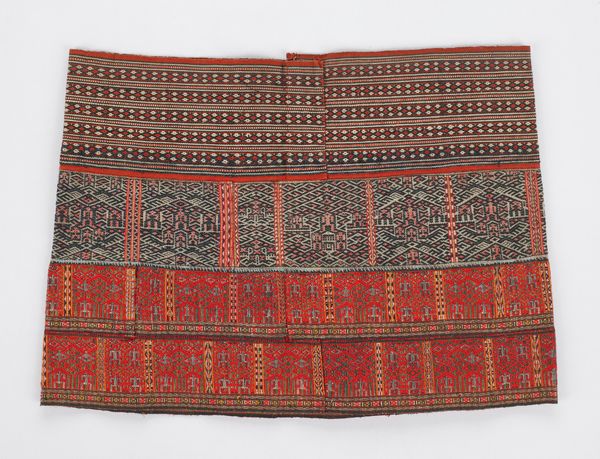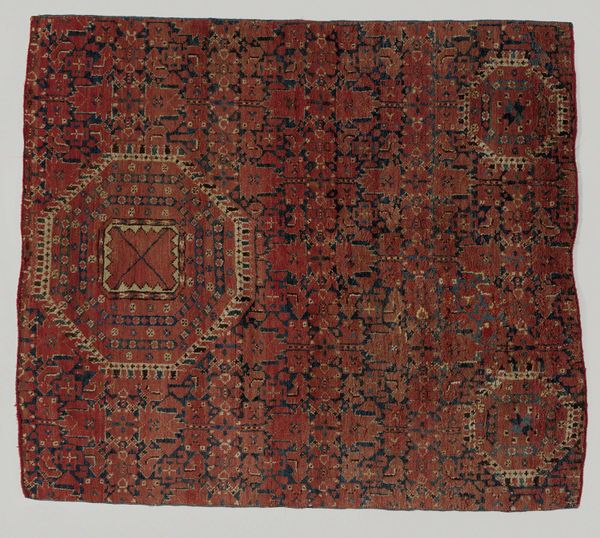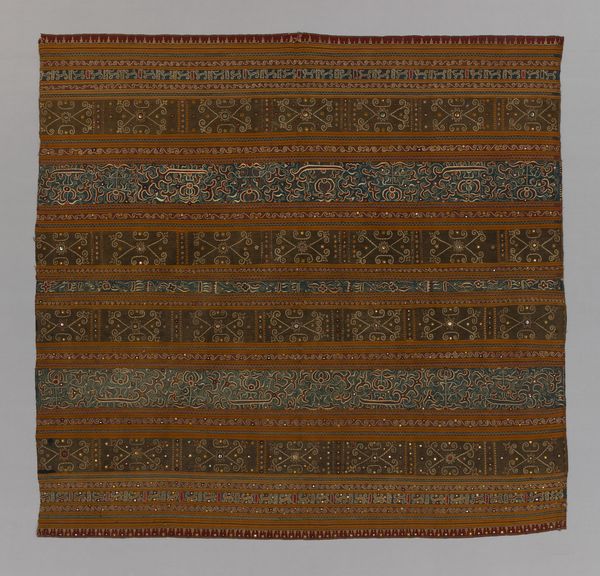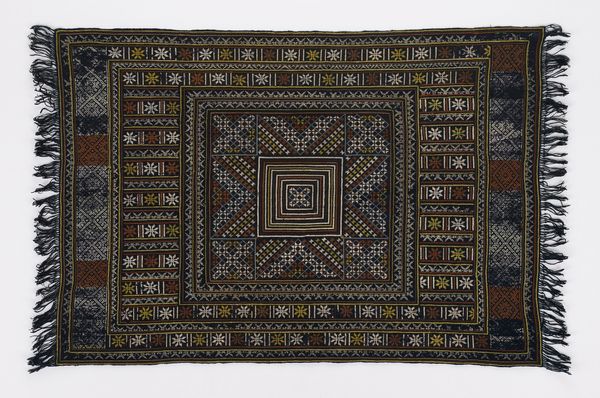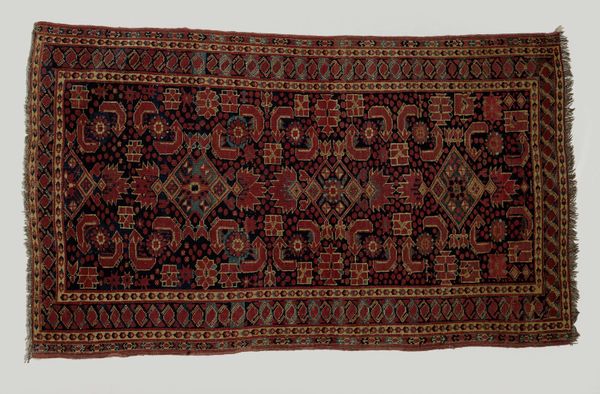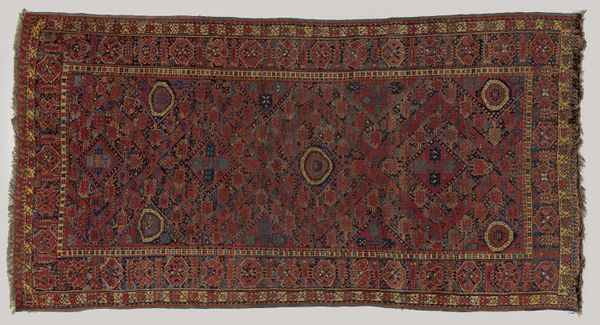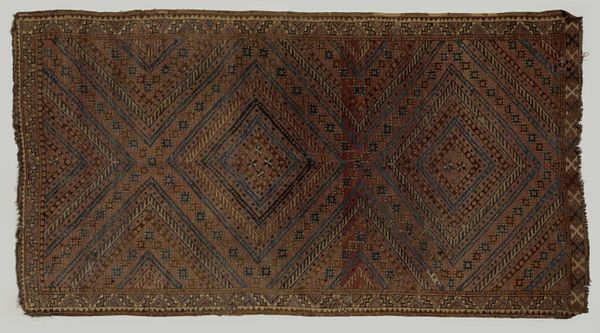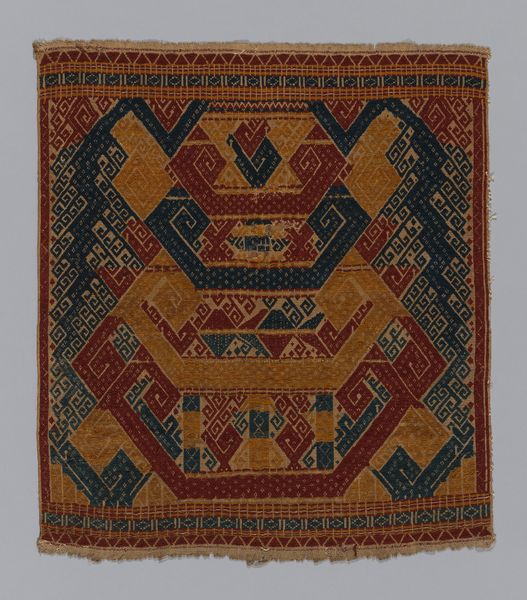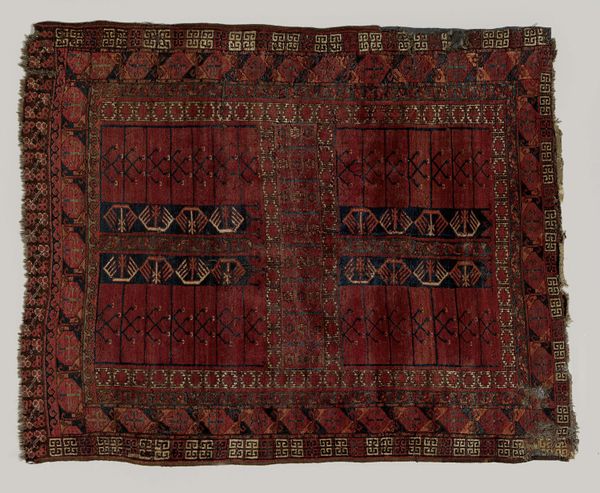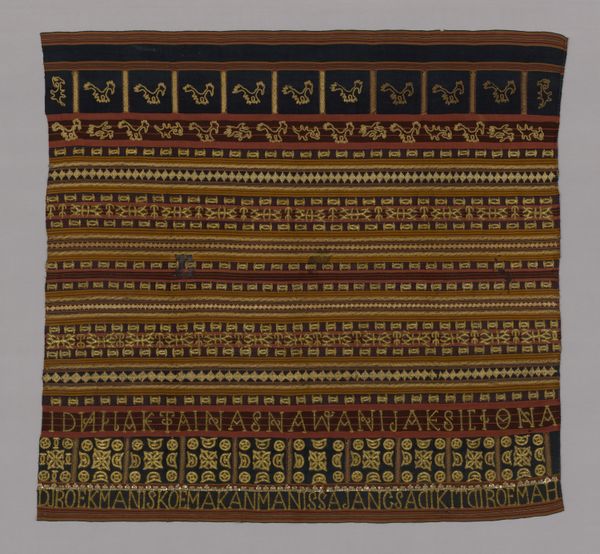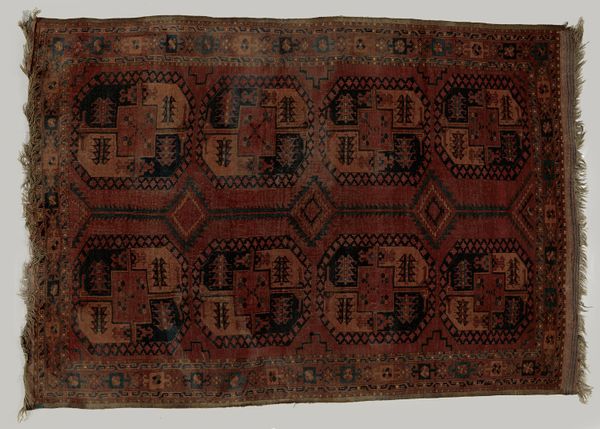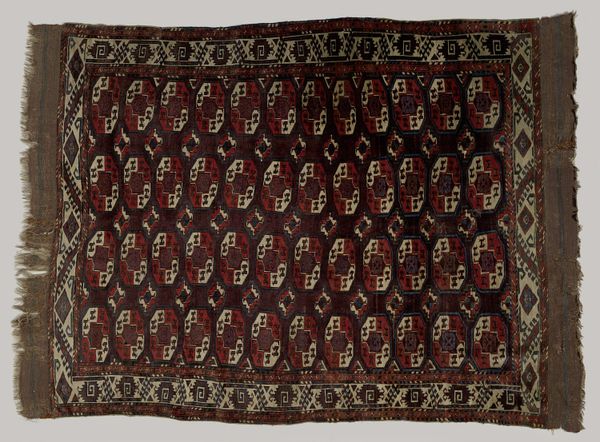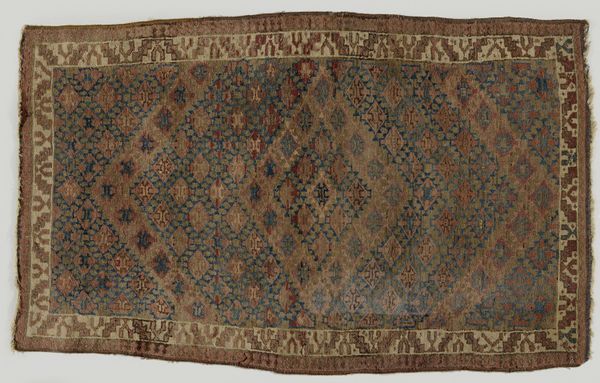
fibre-art, weaving, textile
#
natural stone pattern
#
fibre-art
#
naturalistic pattern
#
asian-art
#
weaving
#
textile
#
pattern design
#
repetitive shape and pattern
#
ethnic pattern
#
geometric
#
repetition of pattern
#
vertical pattern
#
regular pattern
#
pattern repetition
#
layered pattern
Dimensions: 22 1/2 x 43 13/16 in. (57.15 x 111.28 cm)
Copyright: Public Domain
Editor: So, this is an intricately woven skirt, likely from 20th-century China, at the Minneapolis Institute of Art. The textilework is beautiful and features multiple registers packed with dense geometric patterns. What stands out to me is the sheer amount of labor involved. What does this skirt say to you? Curator: For me, the *means of production* are paramount. It's not just about aesthetic appreciation, but understanding the conditions of its making. This cotton skirt, with its meticulously woven geometric patterns, prompts us to ask: who made it? What was their social status? How was the cotton sourced and processed? Editor: That makes sense. The pattern and decoration movement emphasized similar points, elevating craft to fine art, right? Curator: Exactly. This skirt challenges traditional art hierarchies. We need to consider the entire material chain – from raw materials to the finished product – and the labor invested at each stage. Is it factory-produced or the result of domestic labor? The difference dramatically alters our interpretation. What clues does the object itself provide about the maker's world? Editor: I see… the regularity of the patterns, could that indicate machine-made fabric even with all of its intricate designs? Curator: It’s possible, but look closer. Are there slight variations in the weave, imperfections that might suggest handcraftsmanship? Understanding these material details is crucial to unraveling the social narrative embedded within the skirt. Ultimately it has significant impact on what this piece communicates beyond simply surface aesthetic. Editor: That's fascinating, focusing on the actual "stuff" that went into the piece as historical evidence. It really changes how you approach art. Thanks. Curator: My pleasure! It’s about shifting the focus from the individual artist to the collective effort of production and consumption that defines our relationship with material culture.
Comments
No comments
Be the first to comment and join the conversation on the ultimate creative platform.
